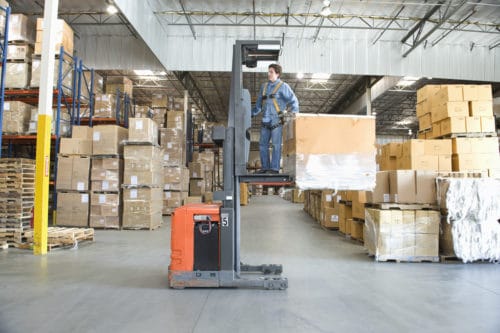Industrial Metal Packaging: Strength and Resilience in Every Layout
Industrial Metal Packaging: Strength and Resilience in Every Layout
Blog Article
Effective Industrial Recycling Solutions for Sustainable Product Packaging: A Comprehensive Guide
In today's significantly environmentally-conscious world, the demand for lasting packaging solutions has never ever been higher. To fulfill this demand, businesses throughout industries are actively seeking efficient industrial recycling services. Browsing the complex landscape of lasting packaging can be testing without a comprehensive guide. That's where this extensive guide on effective industrial recycling solutions for lasting product packaging can be found in. By discovering essential areas such as product packaging product selection, making for recyclability, executing recycling framework, working together with reusing partners, and monitoring and gauging reusing success, this overview will equip you with the expertise and devices essential to make educated choices and drive positive adjustment within your company. Whether you're a packaging specialist, sustainability manager, or simply interested in the topic, this guide will supply valuable understandings and methods to help you navigate the world of sustainable packaging.
Product Packaging Product Option
The option of product packaging products plays an essential role in guaranteeing the sustainability of industrial reusing options. The selection of products is vital in reducing environmental impact and optimizing recycling effectiveness when it comes to sustainable packaging. Picking the appropriate materials can help in reducing waste generation, conserve resources, and advertise a round economic situation.
One vital variable to take into consideration in packaging material selection is recyclability - industrial packaging solutions. Products that can be conveniently reused and included back into the production cycle are liked. Materials like cardboard, paper, glass, and particular kinds of plastics can be recycled several times without shedding their top quality. On the other hand, materials that are tough to reuse, such as non-recyclable compounds or mixed plastics, can produce challenges for the reusing process and may finish up in burners or landfills.
Another consideration is making use of eco-friendly and sustainable materials. Product packaging made from renewable energies, such as plant-based plastics or biopolymers, can assist minimize dependence on nonrenewable fuel sources and reduce climate change. Furthermore, naturally degradable materials break down normally with time, minimizing the build-up of waste in land fills.
Additionally, the weight and volume of packaging products must be minimized to decrease transportation costs and energy consumption. Lightweight materials not just call for less resources during production however likewise add to lower carbon exhausts during transportation.
Designing for Recyclability
Packaging designers must prioritize the use of products that are commonly accepted for recycling and have actually established reusing facilities. Products such as glass, light weight aluminum, and specific kinds of plastic, like Pet dog and HDPE, are typically recycled and ought to be liked over products that are hard or pricey to reuse.
One more essential consideration in making for recyclability is the removal of unneeded elements or materials. By minimizing the variety of layers, finishings, and additional components, product packaging can be made less complex and less complicated to reuse. Furthermore, developers must intend to minimize using blended materials, as they can make complex the recycling procedure.

Implementing Recycling Infrastructure
Effective application of recycling facilities is vital for the success of industrial recycling solutions. Without proper infrastructure in position, the recycling process becomes inadequate and inefficient, preventing the overall goal of lasting packaging.
To execute reusing facilities effectively, a number of crucial aspects require to be taken into consideration. To start with, there ought to be a well-organized collection system that helps with the splitting up and collection of recyclable materials. This can include designated reusing containers in public areas, as well as collaborations with waste administration business for curbside pickup and sorting.
As soon as gathered, the recyclable products require to be moved to reusing centers in a timely fashion. This calls for effective logistics and transport networks, guaranteeing that the materials reach the proper facilities without delay.
At the reusing centers, advanced sorting and handling technologies should be in area to divide different kinds of materials efficiently. This includes the use of automated arranging devices, optical scanners, and manual sorting techniques.
In addition, there should be a robust market demand for recycled materials. This can be attained through cooperations with suppliers and industries that utilize recycled products in their manufacturing procedures. Developing a secure market for recycled products incentivizes the reusing sector and promotes the circular economic situation.
Collaborating With Recycling Partners

One trick aspect of working together with recycling partners is the establishment of clear interaction networks. It is necessary to develop open lines of interaction to facilitate the exchange of information, updates, and comments. This allows both celebrations to remain notified regarding the progression of recycling efforts and address any type of obstacles or concerns that might develop.
In addition, partnership can involve joint initiatives in carrying out and designing reusing programs. Recycling companions can give beneficial insights and guidance look what i found in developing effective collection systems and establishing the most ideal recycling innovations. By collaborating, businesses and reusing companions can maximize the recycling process and minimize waste.
In addition, partnership can expand beyond the operational facets of recycling. It can additionally encompass advocacy and education and learning efforts. By signing up with pressures, organizations and recycling partners can elevate recognition regarding the value of reusing and advertise the adoption of lasting product packaging methods among customers and other stakeholders.
Monitoring and Measuring Recycling Success
To ensure the performance of commercial reusing options and the achievement of lasting product packaging goals, it is critical for businesses and their reusing companions to develop a detailed system for tracking and gauging reusing success (industrial packaging solutions). Determining and tracking reusing success enables organizations to evaluate the influence of their reusing initiatives, determine locations for improvement, and set significant targets for future progress
One method to track recycling success is through making use of data collection and analysis devices. By gathering data on the quantity of packaging waste produced, the portion of waste that is reused, and the kinds of materials being recycled, businesses can acquire beneficial insights into their recycling efficiency. This data can then be examined to identify fads, patterns, and locations of inefficiency.
An additional important element of tracking and measuring reusing success is establishing clear and standardized metrics. This allows organizations to contrast their performance against market criteria and track their progression in time. Metrics such as reusing rates, waste diversion prices, and greenhouse gas emissions can give a measurable measure of an organization's recycling success.

Final Thought
To conclude, applying reliable industrial recycling remedies for sustainable packaging calls for cautious consideration of packaging material selection, developing directory for recyclability, implementing recycling framework, teaming up with recycling partners, and monitoring and measuring reusing success. By incorporating these techniques, organizations can add to a more sustainable and environmentally-friendly technique to packaging, reducing waste and advertising the circular economic climate.
By exploring essential areas such as product packaging product choice, designing for recyclability, executing reusing framework, teaming up with reusing companions, and monitoring and determining recycling success, this overview will furnish you with the understanding and tools needed to make informed choices and drive positive adjustment within your organization. Product packaging developers must focus on the use of materials that are extensively accepted for recycling and have developed recycling facilities.Cooperation with recycling partners is crucial for the successful execution of industrial recycling options and the achievement of sustainable product packaging objectives. By joining pressures, businesses and reusing companions can elevate awareness concerning the importance of reusing and promote the adoption of sustainable product packaging techniques amongst consumers and other stakeholders.
By gathering data on the amount of packaging waste generated, the percentage of waste that is recycled, her response and the kinds of materials being recycled, companies can acquire beneficial understandings right into their reusing efficiency.
Report this page